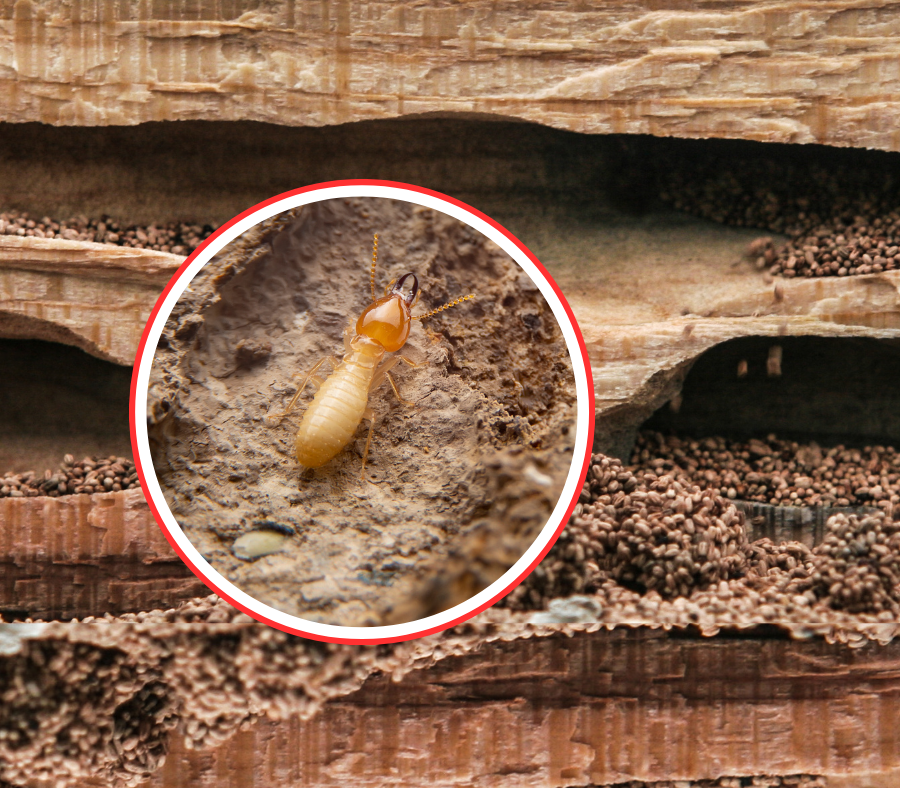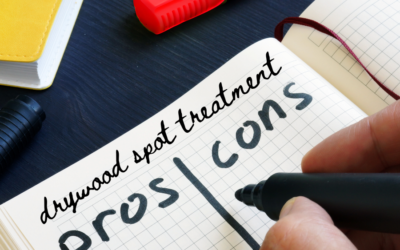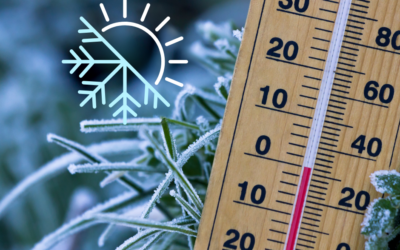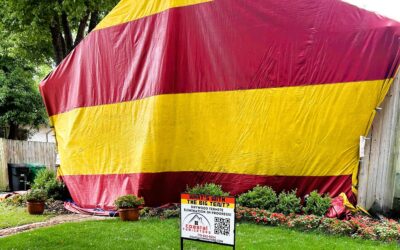Finding damage to the wood in your home can be quite concerning, and figuring out what caused it is essential. Many homeowners confuse termite damage with water damage, allowing infestations to go unnoticed. Knowing the differences allows you to take action before small issues become big, expensive repairs.
In this guide, we’ll break down how to distinguish water damage from termite damage, what steps to take for repairs, and how to protect your home from future infestations.
Can You Spot the Differences Between Signs of Drywood Termite Damage vs. Water Damage?
At first glance, water damage and termite damage can look similar. Both can weaken wood, cause structural issues, and require repairs. However, the causes—and solutions—are very different.
Signs of Water Damage
Water damage occurs when excess moisture seeps into the wood, often due to leaks, flooding, or high humidity. Over time, this moisture breaks down the integrity of the wood, leading to visible and structural issues.
- Warped or swollen wood – Wet wood expands, sometimes causing it to buckle or bow.
- Soft or spongy texture – Water-damaged wood may feel weak or crumble.
- Dark stains and discoloration – Yellow, brown, or black stains are common indicators.
- Mold or mildew growth – Damp conditions can lead to mold or mildew growth, leading to health risks.
- A musty odor – Moisture buildup creates a damp, unpleasant smell.
Common sources of water damage: Leaky pipes, roof leaks, overflowing gutters, plumbing issues, and high humidity. By keeping an eye on these problems, you can prevent more significant issues in the future!
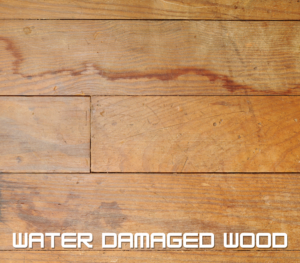
Signs of Drywood Termite Damage
Unlike other types of termites, drywood termites cause damage from the inside out. They dig deep into dry wood, creating hollow spaces while leaving the outer layer mostly untouched. Because of this, their damage can often go unnoticed for years, causing extensive harm before signs appear.
- Hollowed-out spaces – Drywood termites eat wood from the inside, leaving behind thin outer layers.
- A layered or carved appearance – The tunnels they create often have a distinct, channeled pattern.
- Piles of tiny, pellet-like droppings (frass) – Drywood termites push their waste out of small holes near their nests.
- No water stains or mold – Unlike water damage, termite damage doesn’t come with discoloration or a musty smell.
- A hollow sound when tapped – Because drywood termites consume the inner structure of wood, knocking on it often produces a hollow sound.
Common sources of termite damage: Termites gain access through cracks in exterior walls, infested furniture, or wooden structures near your home. Regular inspections can help catch infestations early.
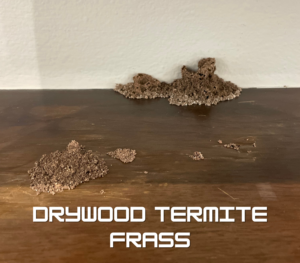
Repairing Termite Damage: What Comes Next?
After fumigating for drywood termites, assessing the damage and making repairs is the next step. You can handle minor cosmetic issues with DIY fixes, but you should call professionals for structural repairs.
DIY Termite Damage Repair
If the damage is minimal and doesn’t affect the structure of your home, you may be able to fix it yourself.
- Wood filler or epoxy – For small holes or surface damage, applying a wood filler can restore the appearance of the wood.
- Sanding and refinishing – Once the filler sets, sanding and staining can help blend the repaired section with the rest of the wood.
- Replacing small sections – If only a portion of a board or trim is damaged, replacing that section may be enough.
When to Call a Professional
For more extensive damage, hiring a contractor is the safest option. Professionals should handle:
- Structural repairs – If termites have damaged load-bearing walls, beams, or floor supports, you need a professional to protect your home’s integrity.
- Exterior wood damage – Wood siding, fascia boards, and roofing elements require proper sealing and weatherproofing to prevent future issues.
- Extensive hollowing – If wood is too damaged to support its weight, it must be replaced rather than repaired.
Protect Your Home with a Termite Warranty
The best way to avoid costly termite damage is through prevention. Regular inspections and proactive treatment can save homeowners thousands in repairs.
At Coastal Fumigators, we offer an Annual Termite Warranty that keeps your home protected year-round. Here’s why it’s worth considering:
- Ongoing protection – Annual inspections and treatments help catch infestations early.
- Cost savings – Avoid the high cost of repeat infestations and repairs.
- Home value boost – Our warranty is fully transferable if you decide to sell, making your home more attractive to buyers.
Final Thoughts
Early detection is key to minimizing repair costs when dealing with water or termite damage. Understanding the differences lets you take the right action, ensuring your home remains safe and structurally sound.
If you suspect termite damage, don’t wait—contact Coastal Fumigators today to schedule an inspection and learn more about our Annual Termite Warranty. Protect your investment and keep your home termite-free for years to come.

